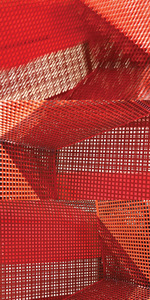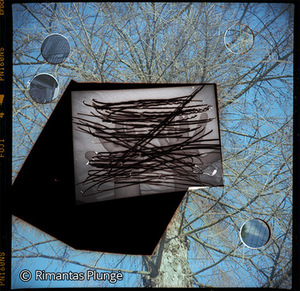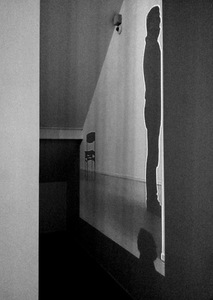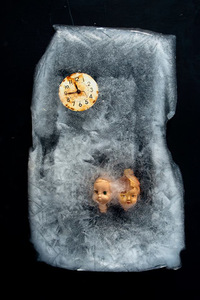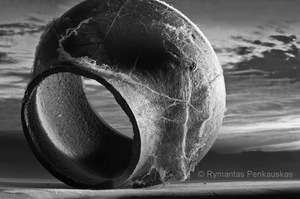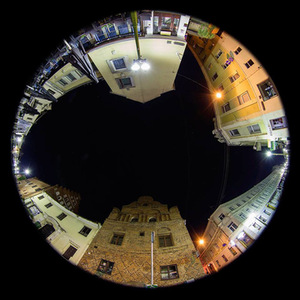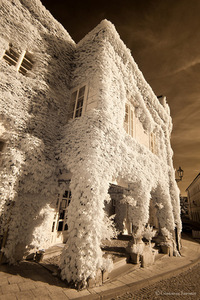Lithuanian Photo Biennial in Germany - from experimental to traditional narrative 3
In brief: Lithuanian Photo Biennial Photographic stories is running from the 25th of June till 7th of August at the Hobeck gallery located at the historical Baron Munchausen family castle (Leitzkau, Germany). The biennial features 12 professional photographers from Lithuania. The artists are presented in detail in Lithuanian, English and German languages. Since the beginning of the event German media and TV shows have been preparing reports about Lithuanian artists.
The most notable experimenter in the photo biennial is Vytautas Magnus University and Kazimieras Simonavičius University associate professor Dr. R. Plungė. He experiments using various photographic technologies, which often become the basis of the main idea behind his work. On the one hand, the artist confirms that photography is one of the cornerstones of the media art tools, which surpasses many strategies of literal reality replication with its experiments and on the other hand, this artist was never aiming at repeating that which is easily visible or read.
Other biennial photographers reflect and represent the tradition of Lithuanian photographic storytelling. Artists echo this tradition in their own way, they imitate it and critically re-evaluate it. The leading figure of this flagship is Vytautas Magnus University professor Romualdas Požerskis. R. Požerskis is participating in the biennial together with his daughter Monika Požerskytė. The exhibition features photographs that captured moments from the world-famous festival Burning Man (USA). The image collection combines the already classical R. Požerskis artistic expression determining the lyrical mood and the reportage-like attention to the photographed subject. He is no stranger to instant sighting of details and fast reaction to an event.
R. Penkauskas' works exhibited in Germany force me to reflect on the specifics of archeological work. Collecting objects from different times that represent different stories and composing them in one photograph author creates an impression that he (i.e. photographer) plays the role of an archeologist.
In conclusion of this brief analysis of the Biennial, I would like to hope that the idea of Lithuanian photo biennial, successfully realized in Germany, would expand more in the future, for example, that it would be possible to present Lithuanian art of photography in different European countries in every few years. Participation in such biennial is very valuable to the artists.








